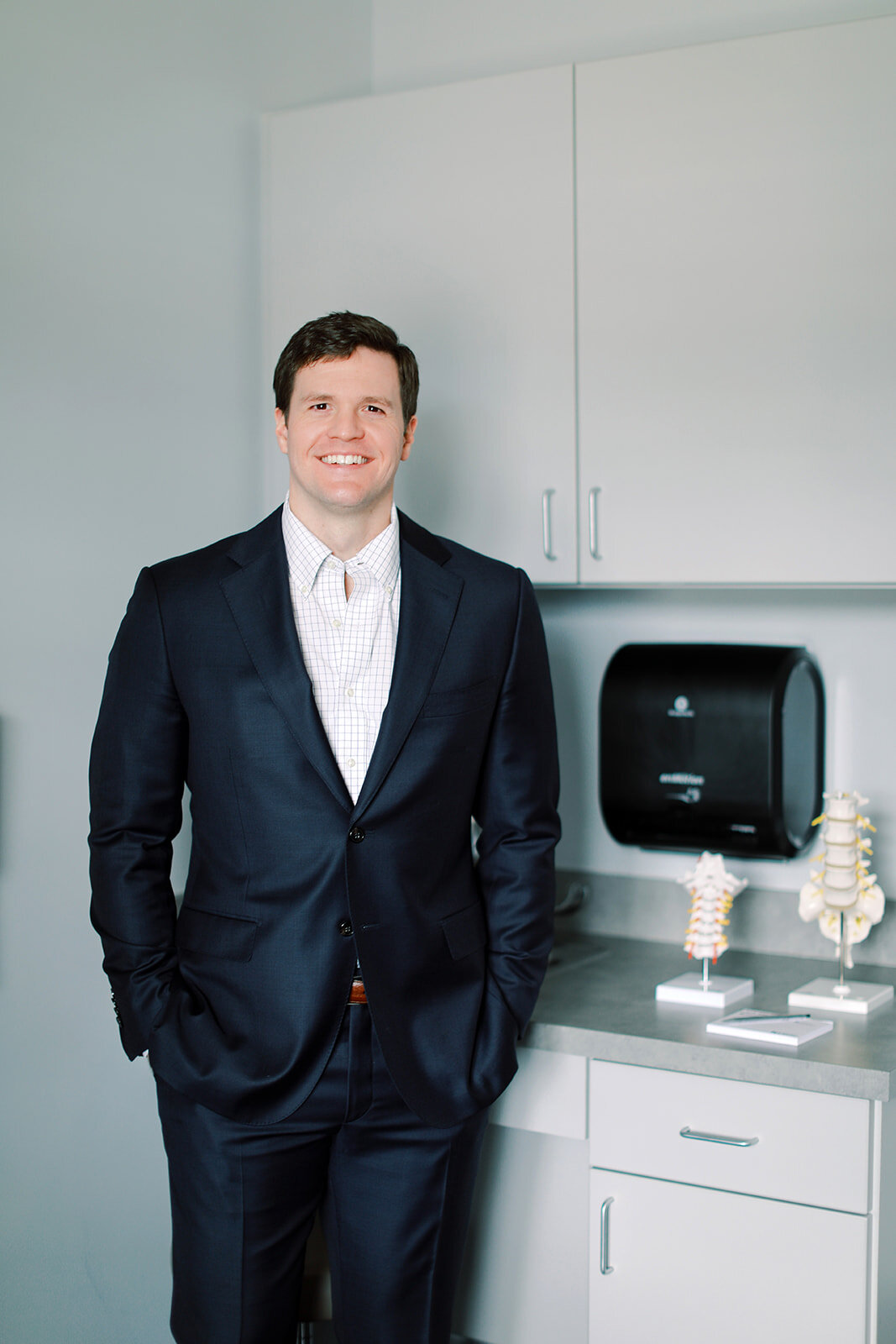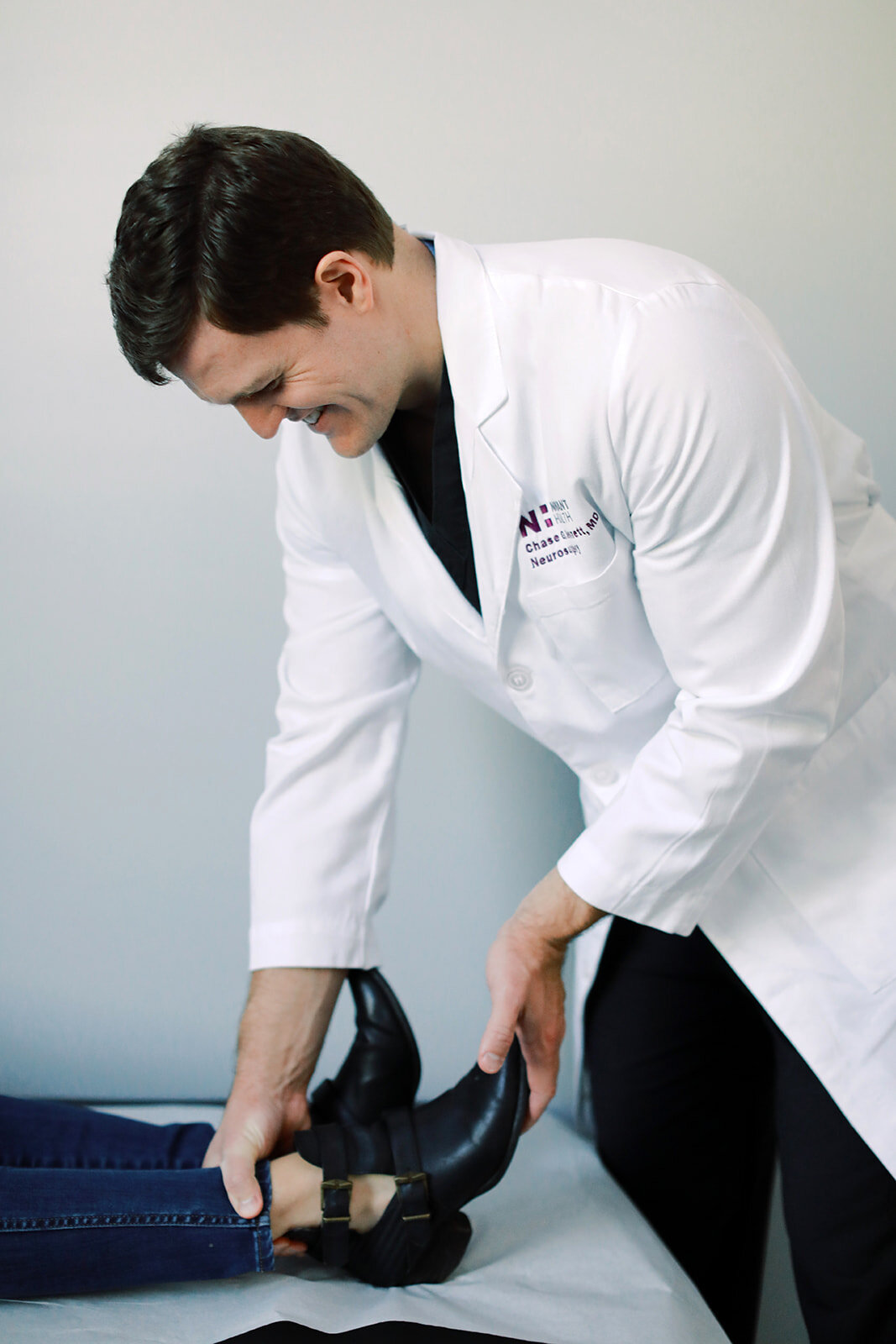If you have any questions about scoliosis or spine surgery, please call or visit our office or your primary/referring physician. This patient information is not a replacement for in-person professional medical advice.
General overview
What is adult degenerative scoliosis?
Adult degenerative scoliosis is a condition where a right, left, or lateral curve develops in a previously straight spine secondary to advanced degenerative disc disease. This curvature occurs as a result of deterioration or degeneration of the joints and intervertebral discs in the spine. As the joints degenerate, they create a misalignment in the back which results in a bend or curvature.
What can cause adult degenerative scoliosis?
Adult degenerative scoliosis is a result of advanced degenerative disc disease (DDD) which is defined as the wear and tear of intervertebral discs. This wear and tear may result from normal aging, or may be due to longstanding trauma. DDD typically begins with a decrease in the water content of the nucleus pulposus which can lead to tears in the annulus fibrosis. With advanced DDD, the loss of disc height can lead to segmental instability resulting in asymmetric disc height loss, causing degenerative scoliosis.
What are symptoms of adult degenerative scoliosis?
Misalignment of the spine can cause an increased pressure on the spinal cord, cauda equina, and spinal nerves, which can lead to:
Back pain and/or stiffness
Leg pain, numbness, tingling, or weakness
What are treatment options?
If adult degenerative scoliosis is established as your diagnosis, our team or your doctor may recommend one or more of the following treatments based on your individual condition:
Physical therapy and strengthening exercises
Rest and a restriction of physical activity
Injections (corticosteroids) to help reduce the pain and swelling
Medications and analgesics to reduce pain and swelling (typical medications include non-steroidal anti-inflammatory drugs, or NSAIDs)
Back brace to help control pain (though it will not correct the deformity)
Surgical solutions
If your symptoms do not improve with other methods, our team or your physician may suggest spinal surgery. Surgical solutions for advanced degenerative disc disease with resultant adult degenerative scoliosis may include the following:
Posterior Lumbar Interbody Fusion (PLIF)
Minimally Invasive PLIF
Transforaminal Lumbar Interbody (TLIF)
Minimally Invasive TLIF
Lateral Lumbar Interbody Fusion
Anterior Lumbar Interbody Fusion (ALIF)
What to expect
If your provider deems surgery as the best option for your specific case of scoliosis or deformity, there are several methods and surgical solutions to consider. Contact your surgical team or provider to learn more about each and which is best for you.
Frequently asked questions
How is Dr. Bennett experienced in Scoliosis correction?
Through his training at two of the busiest and most prestigious spine centers in the country, Stanford University, and Emory University, Dr. Bennett brings substantial experience in spinal deformity and reconstructive surgery to his practice in Winston Salem. Spinal deformities may develop in many ways and may involve the neck (cervical), mid-back(thoracic), low back(lumbar), or a combination of the three. These may be deformities that were present in childhood and worsen over time, the result or osteoporosis or various types of arthritis, or may simply be an exaggerated form of normal aging. Whatever the cause or wherever the location, Dr. Bennett and his team will guide you through the process and options and work with you to develop a plan that meets your individual needs and expectations.



